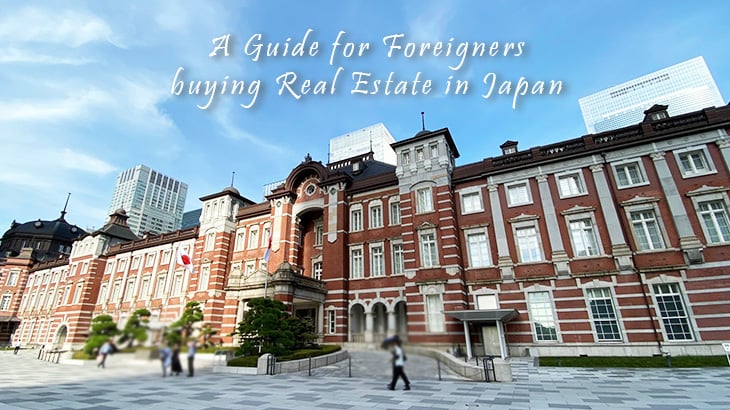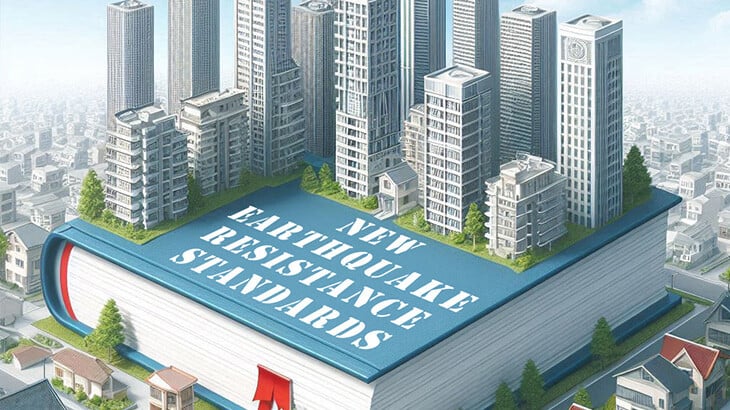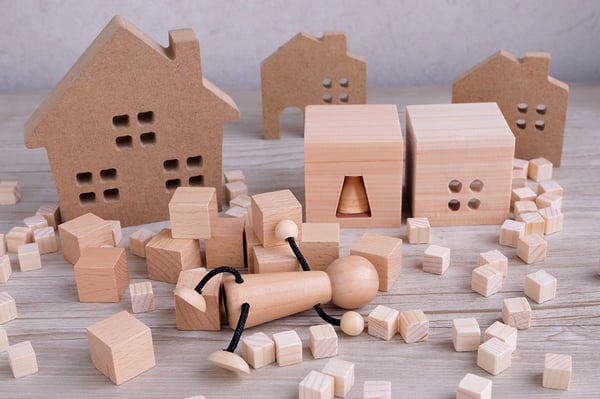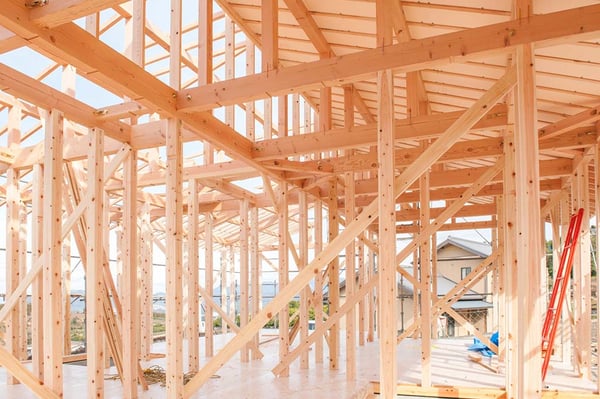Updated Information
Categories
Popular

Unlock the Potential of Chiba Prefecture: A Unique Investment in Japan’s Booming Nature Tourism Industry
Others

A guide for foreigners buying real estate in Japan.
Property Knowledge

Captivating Kawazu Cherry Blossoms: Tokyo’s Hidden Cherry Blossom Spots
Exploring Tokyo

Essential Knowledge for Property Investment in Japan (Part 1): Understanding Japan’s Earthquake Resistance Standards
Property Knowledge

What is 1R, 1K, 1DK and 1LDK
Property Knowledge

What are the costs incurred when buying a property in Japan?
Property Knowledge
Essential Knowledge for Property Investment in Japan (Part 1): Understanding Japan’s Earthquake Resistance Standards
It is said that 20% of the world’s earthquakes occur in Japan. Since Japan is a country with active Earthquake zones, it is essential to have a basic understanding of Japan’s earthquake resistance standards before purchasing real estate there. These standards cover various aspects, including building design, material selection, and structural strength, all aimed at ensuring that buildings can withstand seismic forces and protect the lives and property of residents during an earthquake.
To address earthquake risks, the Japanese government has established specific earthquake resistance standards to ensure the safety of buildings. This article will provide an overview of the development and content of Japan’s earthquake resistance standards, offering readers a better understanding of these important guidelines.
■ What Causes Buildings to Vibrate?

Before understanding Japan’s Building Standards Act and earthquake resistance standards, it is important to recognize the reasons behind building vibrations. Earthquakes are certainly one of the main causes, but strong winds and traffic vibrations can also lead to building shaking.
1. Earthquakes
Earthquakes are the primary source of building vibrations, with intensities ranging from minor to severe. During seismic events, buildings undergo varying degrees of shaking, making it essential to have appropriate earthquake-resistant capabilities to ensure safety.
2. Strong Winds
Wind is another significant factor that causes buildings to vibrate. This is particularly true for high-rise buildings, which are more susceptible to wind forces, resulting in more noticeable vibrations at higher levels. Therefore, designing for wind-induced vibration and implementing relevant measures is especially important for tall structures.
3. Traffic Vibrations
Buildings located near busy roads or railways are affected by vibrations caused by passing vehicles or trains. These vibrations can impact the structural stability and residential comfort of the buildings. To address these vibration effects, specific design techniques and technologies need to be employed to mitigate their impact on the structures.
■ What are “Earthquake Resistance Standards”?

“Earthquake resistance standards” refer to the minimum standards specified in the Building Standards Act, designed to ensure that buildings can withstand earthquakes of a certain intensity. Over time, these standards have been revised annually, so it is essential to adhere to the latest earthquake resistance standards established by the Building Standards Act when constructing new homes.
According to relevant provisions of the Japanese government, the earthquake resistance standards set forth in the Building Standards Act are intended to provide the “minimum standards for protecting the life, health, and property of the citizens.” It is important to emphasize that the primary purpose of the earthquake resistance standards in the Building Standards Act is to protect the lives, health, and property of the citizens, rather than the buildings themselves, which serve merely as shells to safeguard these elements. Therefore, it is crucial to understand that the “earthquake resistance standards” are designed to prevent the collapse of buildings during major earthquakes, thereby avoiding loss of life, rather than ensuring that buildings remain habitable after an earthquake.
The predecessor of the “earthquake resistance standards” was the “City Building Law.” In 1920, Japan implemented its first nationwide building-related regulation, the “City Building Law.” After the Great Kanto Earthquake in 1923, this regulation underwent continuous revisions and was eventually incorporated into the Building Standards Act as the earthquake resistance standards. The standards were marked by a critical juncture in 1981, with those established before 1981 referred to as the “old earthquake resistance standards” and those thereafter known as the “new earthquake resistance standards.” Thus, the period from 1950 to 1981 followed the “old earthquake resistance standards,” while the period after 1981 adheres to the “new earthquake resistance standards.”
■ What are the Differences Between the “Old Earthquake Resistance Standards” and the “New Earthquake Resistance Standards” in Japanese Architecture?

Due to Japan’s location on active earthquake zone and its experience with numerous major earthquakes, the country has continually raised its earthquake resistance standards. Revisions are made after each major earthquake, with the most significant revision occurring in June 1981, known as the “New Earthquake Resistance Standards.” This revision was initiated following the 1978 Miyagi Prefecture earthquake to enhance the earthquake resistance capabilities of buildings. However, it is important to note that even buildings completed after June 1981 may not necessarily meet the conditions set by the “New Earthquake Resistance Standards” if the construction confirmation application for that building was submitted before June 1981.
Subsequently, after the 1995 Great Hanshin-Awaji Earthquake, there was another impetus for modifying the earthquake resistance standards. This revision occurred in 2000 and involved a large-scale overhaul of the standards, particularly focusing on the earthquake resistance of wooden houses. Specifically, the revisions primarily addressed the “foundation structure” and the “reinforcement of building connections.”
Furthermore, the magnitude of earthquakes in Japan is measured using the “intensity” scale employed by the Japan Meteorological Agency (JMA). The earthquake magnitude measured by the JMA (known as the JMA magnitude – Mj) is not based on the energy released by the earthquake, but rather on the amplitude of ground shaking at various locations. Earthquakes are classified into ten levels, ranging from intensity 0 to intensity 7. Below is the Earthquake Intensity Scale based on the earthquake magnitude as defined by the Japan Meteorological Agency:
| Scale | State of Shaking |
| 0 | No shaking is felt by people. |
| 1 | In a quiet indoor environment, some people may feel a slight vibration. |
| 2 | Most people can feel the vibration in a quiet indoor setting, and some people who are asleep may be awakened. |
| 3 | Most people indoors can feel the shaking, with some even sensing it while walking, and the majority of those asleep will be awakened. |
| 4 | Most people will feel panic; nearly everyone can sense the shaking, and most people who are asleep will be awakened. Hanging objects like light fixtures will sway significantly, and unsecured items may fall. |
| 5Weak | Most people will feel unstable when standing and may want to grab onto something for support. Dishes and other items in cabinets may fall, unsecured furniture may shift, and unstable items may topple. |
| 5Strong | Most people will find it difficult to move and will struggle to walk without holding onto something. The number of items falling from cabinets may increase, and unreinforced concrete walls may collapse. |
| 6Weak | Standing becomes difficult. Unsecured furniture will move significantly, with some pieces even tipping over. Tiles from walls and window glass may break or fall, and low earthquake-resistant wooden buildings may have tiles fall off; buildings may lean or collapse. |
| 6Strong | Unable to stand; crawling is necessary to move. People may be thrown outside. Almost all unsecured furniture will move, and the number of fallen items will increase. Large cracks may appear in the ground, and significant landslides or collapses may occur. |
| 7 | Unable to stand and must crawl to move; wooden buildings with low earthquake resistance will gradually tilt or collapse. The number of tilting or collapsing low earthquake-resistant concrete buildings will also increase. |

● Old Earthquake Resistance Standards (Buildings Constructed on or Before June 1981)
If a building received its construction confirmation (building confirmation certificate) before June 1, 1981, it is referred to as an “Old Earthquake Resistance Standards Building.” This means that the building only meets the building standards revised before June 1, 1981, and “seismic” refers to its earthquake resistance capabilities.
Earthquake Resistance Level::
The building has the capacity to withstand a level 5 earthquake without collapsing or crumbling. However, there are no specific provisions for earthquakes exceeding level 5.
● New Earthquake Resistance Standards (Buildings Constructed on or After June 1981)
If a building’s construction confirmation (building confirmation certificate) was issued on or after June 1, 1981, it is called a “New Earthquake Resistance Standards Building.” This indicates that the building is subject to the building standards revised after June 1, 1981.
Earthquake Resistance Level (1): The building will sustain almost no damage during a level 5 earthquake.
Earthquake Resistance Level (2): The building will not collapse or crumble during level 6 to 7 earthquakes.

Therefore, it is recommended to choose properties that comply with the Earthquake Resistance Standards when purchasing or renting a home in Japan. In the 1995 Great Hanshin Earthquake, 98% of collapsed wooden houses were built to Old Earthquake Resistance Standards, while most buildings that met the New Earthquake Resistance Standards remained intact during the strong earthquake measuring 6.8 on the Richter scale, demonstrating the high earthquake resistance level of the new standards.

Additionally, after the 1995 Great Hanshin Earthquake, the Japanese government made significant legal amendments regarding wooden buildings through the “Seismic Renovation Promotion Law,” which mandates property owners of buildings not meeting the current New Earthquake Resistance Standards to conduct earthquake resistance diagnostics and, if necessary, strengthen their buildings. Therefore, wooden buildings receiving construction confirmations (building confirmation certificates) on or after June 1, 2000, will have more robust and durable seismic structural designs compared to those constructed before 2000.
■ What are the levels of Japan’s ” Earthquake Resistance Standards?
The ” Earthquake Resistance Standards ” are determined according to earthquake resistance levels, which are established based on the ” Quality Assurance Act” formulated in 2000. These standards are mainly divided into three levels to indicate the extent of collapse or damage a building may experience during an earthquake. At the same time, these three levels also represent the strength of a building’s resistance to earthquakes, indicating the degree of force it can withstand during a major earthquake.
●「The three levels of ” Earthquake Resistance Standards ” :
| Seismic Level | Type of Building | Strength |
| Level 3 | Hospitals and similar buildings | 1.5 times stronger than Level 1 |
| Level 2 | Schools, police stations, and similar buildings | 1.25 times stronger than Level 1 |
| Level 1 | Common houses or apartments | Minimum seismic performance |
When choosing a building, it’s important to pay attention to its seismic level. Buildings with higher seismic levels are likely to be safer during an earthquake, providing residents with peace of mind.
■ Summary
This article introduces Japan’s earthquake resistance standards and levels, as well as the reasons for building vibrations. Due to Japan’s location in the Circum-Pacific earthquake zone, where earthquakes are frequent, seismic resistance is a primary consideration in building design and construction. The earthquake resistance standards and levels regulate the performance criteria of buildings during earthquakes, ensuring they can withstand varying intensities of seismic activity.
When selecting a property, in addition to considering whether the building complies with Japan’s latest earthquake resistance standards, it is essential to pay attention to various factors such as the overall quality of the building, its geographical location, and the surrounding environment. A comprehensive assessment of these factors is necessary to choose a safe and reliable property for investment.
Moreover, understanding Japan’s earthquake-resistant building techniques is also crucial. Japan’s earthquake-resistant construction methods are primarily divided into three categories: seismic-resistant structures, vibration-damping structures, and base-isolated structures. The next article, “A Must-Read for Investing in Japanese Real Estate: Understanding Japan’s Seismic Standards and Technologies (Part II),” will provide a detailed explanation of these three earthquake-resistant building techniques. Please stay tuned for this informative piece to gain a more comprehensive understanding of the earthquake resistance performance of Japanese properties, which will provide a stronger reference for your investment decisions.
~ END ~
If you would like to learn more about property investment in Japan, please click here. >
・Recommended Articles

Property Knowledge2022.9.22
A guide for foreigners buying real estate in Japan.
Topic: Property Information Post on 2022.9.22 Basically, the procedure of buying real estate in Japa […]

Market Information2022.7.12
What is the most updated land value in Tokyo and the changes in 5 years ?
In Japan, property prices are decided by both land and buildings value. Although there is a tendency that the […]

Property Knowledge2022.7.4
NEW OR OLD? Which one is better for property investment in Japan?
Is it better to invest in a new construction property or a second-hand one?What are the factors affecting the […]

Property Knowledge2022.4.28
What are the costs incurred when buying a property in Japan?
Before deciding to purchase a property in Japan, it is important to have a basic understanding on the required […]
Subscribe for Latest Property News
Don’t miss out! Subscribe now to stay tuned to the latest trends, news, and listings in Japan’s real estate market.



